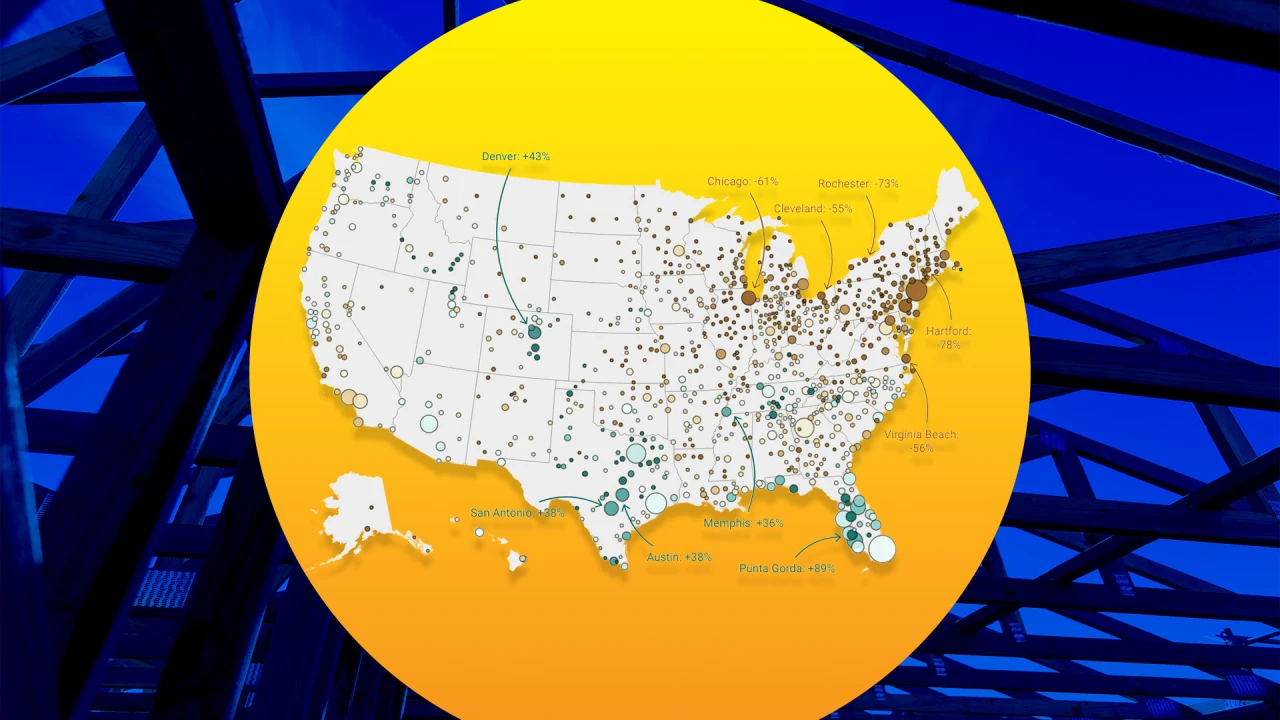50 ways that Trump has attacked the environment in his first 100 days
Nearly every day of President Donald Trump’s first 100 days in office, his administration came out with new attacks on the environment. On a single day in March, for example, the Environmental Protection Agency announced plans to roll back more than two dozen environmental regulations, affecting everything from mercury pollution at coal power plants to fuel efficiency standards for cars. On the same day, it shut down its environmental justice offices and made plans to limit the Clean Water Act. To help make it easier to follow the barrage of rollbacks, the nonprofit Natural Resources Defense Council (NRDC) is tracking the actions online. It’s not clear yet what will survive lawsuits and actually stick, though the policy decisions are already having real-world consequences. Here’s a partial look at what’s happened so far. April 28: The Trump administration “released” the scientists who were working on a national report about how climate change affects the United States. The report, required by Congress, has been published every four years since 2000. April 24: Trump issued an executive order to fast-track permits for deep-sea mining, which environmental groups say could cause irreparable harm to marine ecosystems. April 24: The Department of the Interior announced a new “emergency permitting” approach that would fast-track approval for some energy projects from a period of one to two years to just two weeks, skipping most of the standard process of environmental review. (Wind and solar projects don’t qualify for the accelerated process; it’s aimed at fossil fuels.) April 23: The Trump administration eliminated the Office of Special Presidential Envoy for Climate, which was responsible for global climate diplomacy. April 22: The Trump administration announced plans to cut hundreds of jobs at the EPA’s Office of Environmental Justice and External Civil Rights, an office focused on helping communities that have suffered the worst impacts of pollution. April 21: The EPA announced plans to cancel around $40 million in grants aimed at protecting children from toxic chemicals, including pesticides and PFAS (“forever chemicals”). April 18: The White House announced a list of mining projects for expedited approval, including a copper mine in Arizona that Native American tribes say is on sacred land and could cause environmental damage, including draining scarce water resources. April 18: The Department of the Interior announced a new program to expand offshore oil and gas drilling. April 17: The Department of the Interior announced plans to cut $10 billion for clean energy projects. April 16: The Trump administration proposed a new rule redefining what it means to “harm” wildlife under the Endangered Species Act. Habitat destruction, one of the leading causes of extinction, would no longer be considered harm. April 16: The Trump administration took the first steps to roll back former President Joe Biden’s protection of millions of acres of public lands in the West and in Alaska. April 15: The Department of Energy issued a rule to repeal water efficiency standards for showerheads. April 15: The EPA gave the worst-polluting coal power plants exemptions from new limits on toxic pollution, including mercury, which is especially dangerous for children. April 15: The EPA announced plans to get rid of the Greenhouse Gas Reporting Program, which requires major polluters to track and report climate emissions. April 11: The Trump administration announced plans to end climate research at the National Oceanic and Atmospheric Administration (NOAA), including data used to predict hurricanes. April 9: Trump issued an executive order that aims to erase hundreds of existing environmental and public health rules; this is undoubtedly unconstitutional. April 9: Trump issued an executive order requiring agencies to add “expiration dates” to energy and environmental regulations. April 9: Trump issued an order that aims to block states from enforcing their own climate laws. April 9: The Trump administration cut nearly $4 million in climate research funding at Princeton University, saying the research promoted “exaggerated” climate threats and blaming it for increasing climate anxiety. April 8: Trump issued executive orders to boost coal power, including opening up federal land to new mining and potentially forcing some coal plants to stay open when they were planning to close. April 5: The Trump administration reportedly plans to stop states from limiting the use of PFAS (known as forever chemicals) in consumer goods. April 4: The Trump administration canceled the Building Resilient Infrastructure and Communities program, which gave grants to communities to prepare for floods, wildfires, hurricanes, and other disasters. (One example of a project that lost what the administration called “wasteful” and “woke” funding: upgrading culverts in DeKalb County, Georgia, to keep r

Nearly every day of President Donald Trump’s first 100 days in office, his administration came out with new attacks on the environment. On a single day in March, for example, the Environmental Protection Agency announced plans to roll back more than two dozen environmental regulations, affecting everything from mercury pollution at coal power plants to fuel efficiency standards for cars. On the same day, it shut down its environmental justice offices and made plans to limit the Clean Water Act.
To help make it easier to follow the barrage of rollbacks, the nonprofit Natural Resources Defense Council (NRDC) is tracking the actions online. It’s not clear yet what will survive lawsuits and actually stick, though the policy decisions are already having real-world consequences. Here’s a partial look at what’s happened so far.
- April 28: The Trump administration “released” the scientists who were working on a national report about how climate change affects the United States. The report, required by Congress, has been published every four years since 2000.
- April 24: Trump issued an executive order to fast-track permits for deep-sea mining, which environmental groups say could cause irreparable harm to marine ecosystems.
- April 24: The Department of the Interior announced a new “emergency permitting” approach that would fast-track approval for some energy projects from a period of one to two years to just two weeks, skipping most of the standard process of environmental review. (Wind and solar projects don’t qualify for the accelerated process; it’s aimed at fossil fuels.)
- April 23: The Trump administration eliminated the Office of Special Presidential Envoy for Climate, which was responsible for global climate diplomacy.
- April 22: The Trump administration announced plans to cut hundreds of jobs at the EPA’s Office of Environmental Justice and External Civil Rights, an office focused on helping communities that have suffered the worst impacts of pollution.
- April 21: The EPA announced plans to cancel around $40 million in grants aimed at protecting children from toxic chemicals, including pesticides and PFAS (“forever chemicals”).
- April 18: The White House announced a list of mining projects for expedited approval, including a copper mine in Arizona that Native American tribes say is on sacred land and could cause environmental damage, including draining scarce water resources.
- April 18: The Department of the Interior announced a new program to expand offshore oil and gas drilling.
- April 17: The Department of the Interior announced plans to cut $10 billion for clean energy projects.
- April 16: The Trump administration proposed a new rule redefining what it means to “harm” wildlife under the Endangered Species Act. Habitat destruction, one of the leading causes of extinction, would no longer be considered harm.
- April 16: The Trump administration took the first steps to roll back former President Joe Biden’s protection of millions of acres of public lands in the West and in Alaska.
- April 15: The Department of Energy issued a rule to repeal water efficiency standards for showerheads.
- April 15: The EPA gave the worst-polluting coal power plants exemptions from new limits on toxic pollution, including mercury, which is especially dangerous for children.
- April 15: The EPA announced plans to get rid of the Greenhouse Gas Reporting Program, which requires major polluters to track and report climate emissions.
- April 11: The Trump administration announced plans to end climate research at the National Oceanic and Atmospheric Administration (NOAA), including data used to predict hurricanes.
- April 9: Trump issued an executive order that aims to erase hundreds of existing environmental and public health rules; this is undoubtedly unconstitutional.
- April 9: Trump issued an executive order requiring agencies to add “expiration dates” to energy and environmental regulations.
- April 9: Trump issued an order that aims to block states from enforcing their own climate laws.
- April 9: The Trump administration cut nearly $4 million in climate research funding at Princeton University, saying the research promoted “exaggerated” climate threats and blaming it for increasing climate anxiety.
- April 8: Trump issued executive orders to boost coal power, including opening up federal land to new mining and potentially forcing some coal plants to stay open when they were planning to close.
- April 5: The Trump administration reportedly plans to stop states from limiting the use of PFAS (known as forever chemicals) in consumer goods.
- April 4: The Trump administration canceled the Building Resilient Infrastructure and Communities program, which gave grants to communities to prepare for floods, wildfires, hurricanes, and other disasters. (One example of a project that lost what the administration called “wasteful” and “woke” funding: upgrading culverts in DeKalb County, Georgia, to keep roads usable during heavy rain and flooding.)
- April 3: The U.S. Department of Agriculture issued an “Emergency Situation Determination” that opens up more than 100 million acres of national forests to more logging.
- April 2: The Trump administration fired all staff members working on the Low Income Energy Assistance Program, which was designed to help families afford heating and cooling.
- March 20: Trump issued an executive order to increase mining on public land.
- March 19: The U.S. Fish and Wildlife Service delayed the process of listing the monarch butterfly as a threatened species under the Endangered Species Act.
- March 19: The Department of Energy granted conditional authorization for the LNG export terminal in Louisiana, which will pollute local communities and dramatically add to climate pollution.
- March 17: Trump signed a law repealing a fee on oil and gas companies for excess emissions of methane, a potent greenhouse gas. The fee would have had the same effect on pollution as taking 8 million gas cars off the road.
- March 17: The EPA announced plans to gut its science office and lay off more than 1,000 scientists.
- March 14: The EPA stopped enforcing pollution regulations at energy facilities.
- March 12: The EPA announced sweeping plans to dismantle more than two dozen air quality and carbon pollution regulations. That included an attack on the “endangerment finding,” which makes it possible to regulate climate pollution like CO2 under the Clean Air Act. EPA Administrator Lee Zeldin described it as “driving a dagger straight into the heart of the climate change religion.”
- March 12: The EPA and U.S. Army Corps of Engineers announced plans to revise the definition of “waters of the U.S.” under the Clean Water Act, threatening to strip protection from streams, wetlands, and other water sources that supply communities with drinking water and support wildlife.
- March 12: The EPA announced that it was shutting down its environmental justice offices, which worked on projects like helping rural communities prepare for flooding or install sewage systems.
- March 10: The EPA announced the cancellation of $1.7 billion in environmental justice grants.
- March 3: The Trump administration ordered thousands of new EV chargers to be disconnected at federal buildings.
- March 1: Trump labeled imported wood a “national security risk” and issued an executive order to dramatically expand logging in U.S. public forests.
- February 19: The Federal Emergency Management Agency issued a memo to remove 10 climate-related words and phrases from its documents, including climate resilience and changing climate.
- February 18: The Trump administration fired hundreds of FEMA workers while disasters were ongoing in states like Kentucky and West Virginia.
- February 18: The EPA froze access to $20 billion in grants under the Greenhouse Gas Reduction Fund, which supported projects like solar farms and EV chargers. (Even after a judge ordered the release of the money, the intended recipients still couldn’t access it.)
- February 14: The Trump administration fired more than 1,000 National Park Service workers. Workers were later rehired, but the so-called Department of Government Efficiency, or DOGE, is currently looking for ways to make cuts again.
- February 14: Trump issued an executive order to create a “National Energy Dominance Council” led by fossil fuel allies that excludes wind and solar power.
- February 6: The Trump administration ordered states to suspend a $5 billion program to build a network of new EV charging stations.
- January 31: The Trump administration scrubbed climate-related language from government websites.
- January 31: Trump officials released billions of gallons of water from dams in California, claiming incorrectly that it could have prevented the Los Angeles-area wildfires, and giving California farmers new worries about water shortages.
- January 28: The EPA dismissed members of the Clean Air Scientific Advisory Committee and Science Advisory Board, two groups that offer expertise on air pollution standards.
- January 28: The Department of Transportation started the process of weakening fuel economy standards.
- January 21: Trump issued an executive order to end the American Climate Corps, a program that was designed to train thousands of young people to work on jobs like solar installation and wildfire prevention.
- January 20: Trump issued an executive order to withdraw the U.S. from the Paris climate agreement.
- January 20: Trump revoked executive orders from Biden that protected certain areas of federal water, opening up sensitive habitats to offshore oil and gas drilling.
- January 20: Trump issued an executive order called “Unleashing America’s Energy” that aims to revive the abandoned Keystone XL pipeline, fast-track fossil fuel development, limit incentives for buying electric vehicles, and roll back efficiency standards for appliances.
For the full list—and to follow new attacks on the environment from the Trump administration—check out NRDC’s tracker.


























![[Free Webinar] Guide to Securing Your Entire Identity Lifecycle Against AI-Powered Threats](https://blogger.googleusercontent.com/img/b/R29vZ2xl/AVvXsEjqbZf4bsDp6ei3fmQ8swm7GB5XoRrhZSFE7ZNhRLFO49KlmdgpIDCZWMSv7rydpEShIrNb9crnH5p6mFZbURzO5HC9I4RlzJazBBw5aHOTmI38sqiZIWPldRqut4bTgegipjOk5VgktVOwCKF_ncLeBX-pMTO_GMVMfbzZbf8eAj21V04y_NiOaSApGkM/s1600/webinar-play.jpg?#)










































































































































![[The AI Show Episode 145]: OpenAI Releases o3 and o4-mini, AI Is Causing “Quiet Layoffs,” Executive Order on Youth AI Education & GPT-4o’s Controversial Update](https://www.marketingaiinstitute.com/hubfs/ep%20145%20cover.png)













































































































































































































































































_Tanapong_Sungkaew_via_Alamy.jpg?width=1280&auto=webp&quality=80&disable=upscale#)
















































































































![Apple Restructures Global Affairs and Apple Music Teams [Report]](https://www.iclarified.com/images/news/97162/97162/97162-640.jpg)
![New iPhone Factory Goes Live in India, Another Just Days Away [Report]](https://www.iclarified.com/images/news/97165/97165/97165-640.jpg)





































































































